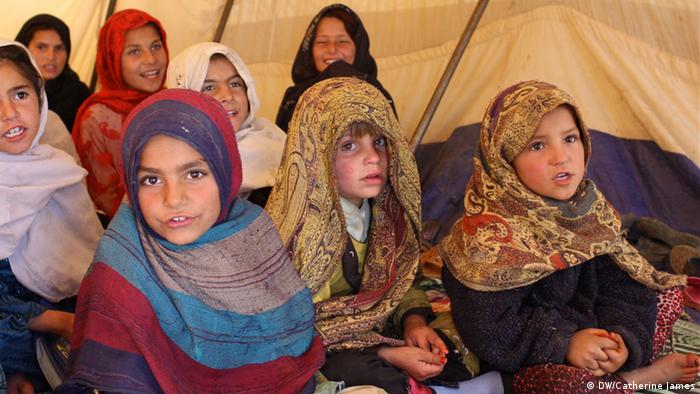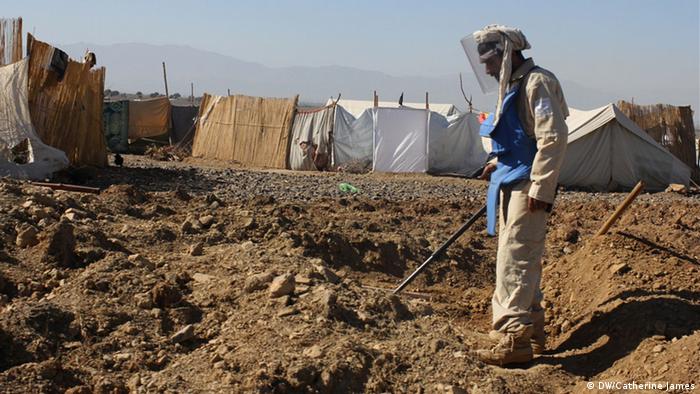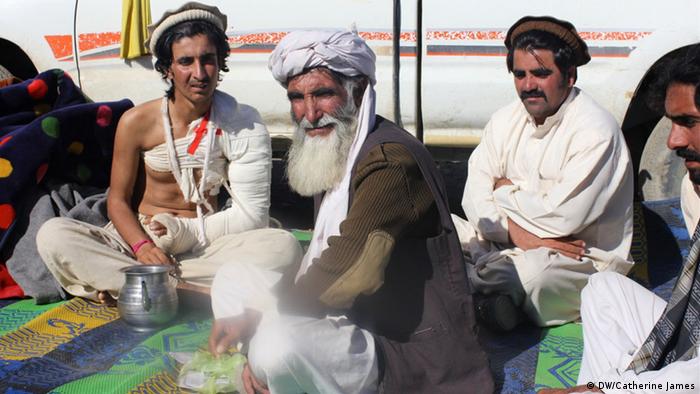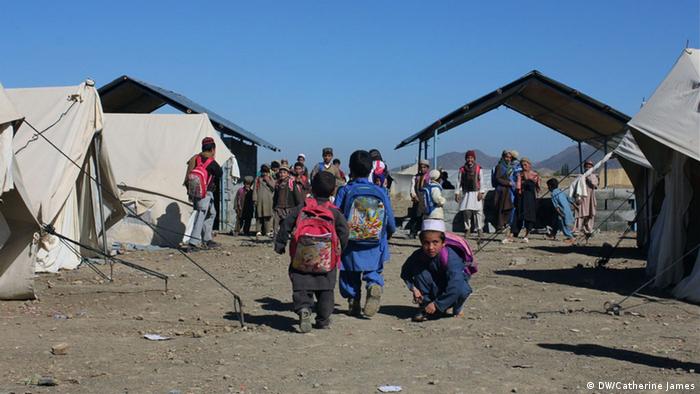Pakistan has been carrying out a military offensive in its restive northwest to root out Islamist militants since June. Civilians have been caught in the crossfire, as Catherine James reports from Khost, Afghanistan.
When Pakistan warned the residents of North Waziristan Agency that the military was launching a strike to clear their region of militants, few imagined that seven months later they would still be homeless.
Ahmaddudin, a shepherd from North Waziristan, fled across the nearby border into Afghanistan with his four siblings and parents, along with more than 200,000 other people, to avoid the ensuing violence. They took nothing with them, believing they would return within a week.
Now, Ahmaddudin's family says it could be three years before they return home.
"We thought we would be here two or three days and then return back. But the papers we have received [from organizations supporting refugees] say 'we will help you for three years,'" Ahktar Jan, Ahmaddudin's father, says from his tent in Gulan refugee camp, a makeshift camp in Afghanistan's eastern Khost province.
The family decided to reclaim the flock of sheep they left behind, but the attempt almost killed Ahmaddudin, 23, when he was caught in an airstrike by the Pakistani air force.
"I was afraid to go because the bombing was continuing and the army was still fighting," Ahmaddudin says. "But I had to get the sheep."
Knocked out by the blast, Ahmaddudin was left in a field for more than three hours before it was safe enough for his cousin, Zarim Khan, to collect him.
"I didn't know if he was alive or dead. I thought maybe he was dead because the bombing was so strong," Zarim Khan says. "I was very afraid [retrieving him from the field]. But we are Pashtuns - it doesn't matter even if there are bombs, I must bring him back."
Refugee camp in a minefield
With shattered bones and shredded muscles in the left side of his body, Ahmaddudin faces a long recovery through winter in the camp - which is also a minefield.
Halo Trust began demining the area in July - almost a month after the refugees began squatting there, not knowing that the area had been heavily mined from 1984 to 1989 during the war with the Soviet Union.
Four months later, the official count of unexploded ordinances uncovered by the deminers was already 156.
"We have found a total of 121 anti-personnel mines and 10 anti-vehicle mines, 25 cluster munitions in the camp and the surrounding hills up to the end of November," a spokesperson for the organization told DW in an email.
Despite the danger, families in Golan camp move about heedlessly, crossing upturned land at the same time as the deminers work on scanning it.
Noor al-Khoda, a senior deminer responsible for overseeing the progress at Gulan, says he has warned people of the risks but they continue to walk where they want.
"One of the anti-tank mines was found when a family was preparing the ground to set up their tent," he says, showing pictures of the tent and the round circular lid of a mine poking out from the smoothed earth.
The organization is working as quickly as possible to ensure the total area is given the all-clear, but expects with more than half the designated area at risk remaining, it will only finish the task by the end of May.
The total area cleared up to the end of November was 531,120 square meters - another 722,071 square meters remain.
"The influx of refugees continues and every day at least 100 new families are crossing the border to Afghanistan from Northern Waziristan, so clearance is a top humanitarian priority," Halo's spokesperson told DW last week.
Tent schools
At least 2,100 children under the age of 11 live in Golan camp, according to the Norwegian Refugee Council, which runs makeshift schools there. That is the number registered to attend classes - conducted in rudimentary tents set up in five locations around the camp. Around 800 of those in attendance are girls.

Around 800 girls are among the 2,100 students attending classes with materials provided by the Norwegian Refugee Council
The NRC is building more permanent structures for the classrooms as a way of encouraging the children to attend the classes, especially during the winter months.
Getting by with basics
Indeed, "winter-proofing" the camp is the top priority for the groups involved in meeting the humanitarian demands. Not only do the 3,500 families need the basics of food, fuel, and heating, but medical assistance is sorely hard to come by.
Only one small clinic has been set up at the camp, run by a national NGO, Afghanistan Center for Training and Development. The doctors can only address basic ailments, sending the more serious cases to local hospitals in Khost province - or further afield, as in the case of Ahmaddudin who was sent to Peshawar.
Dr Naeem Lakawal, working at the clinic, says the most common complaints people come for are psychological: stress, anxiety, sleeplessness, depression.
"We don't give treatment to psychiatric patients," he says, between treating barefoot children at the clinic. The more serious patients - many who have experienced considerable trauma and stress - are referred to the local district clinic if they desire, at the very least, medication, he adds.
Anecdotally, hundreds of refugees opt not to go to the doctor even for fairly pressing needs, such as pregnancy. Around 80 women gave birth in the camp in October alone. Had they gone to the clinic, they would have been referred to the Khost hospital, Dr Lakawal says.
One such baby is Samidullah, whose mother gave birth to him in September, about two months after arriving in the camp with her three other children, all under the age of four. His father is still in Pakistan.

Samidullah's mother gave birth without assistance from a doctor or midwife as no females with expertise were available
How much longer Samidullah and his family will live in the camp is unclear. The Pakistan military has been deliberately vague about the Waziristan "clearing operation" that began June 15 after years of pressure from the international community to do more to reign in the Taliban and militants based in the semi-autonomous region.
Apart from those in Golan camp, a further 220,000 are estimated to have crossed into Khost province. Most of these people are living in local communities, with whom they share language and culture. The United Nations Human Rights Commission (UNHCR), which oversees Golan camp, has pointed to this as at least one positive coming out of the massive displacement, since living in local communities is better for people who have fled their homes.



No comments:
Post a Comment